Many software companies have their own challenges when it comes to marketing and sales, but in our experience, many teams face three common problems:
– How to get a stable flow of qualified leads
– How to sell to both startups and enterprises
– How to deal with top-of-the-funnel leads
So, is there some way to solve all three problems? Yes! And one of the most effective ways to get ideas about this is through competitor analysis.
In this article, we will explain how to perform competitor analysis to help you deal with these three issues. Using this technique, you will be able to fill your marketing backlog with tasks to correct these issues.

Our usual practice is to analyze 5 to10 competitors for each problem but to keep this brief, we’ll use Appster as an example [an Australian mobile app development firm that ceased to exist in December 2018].
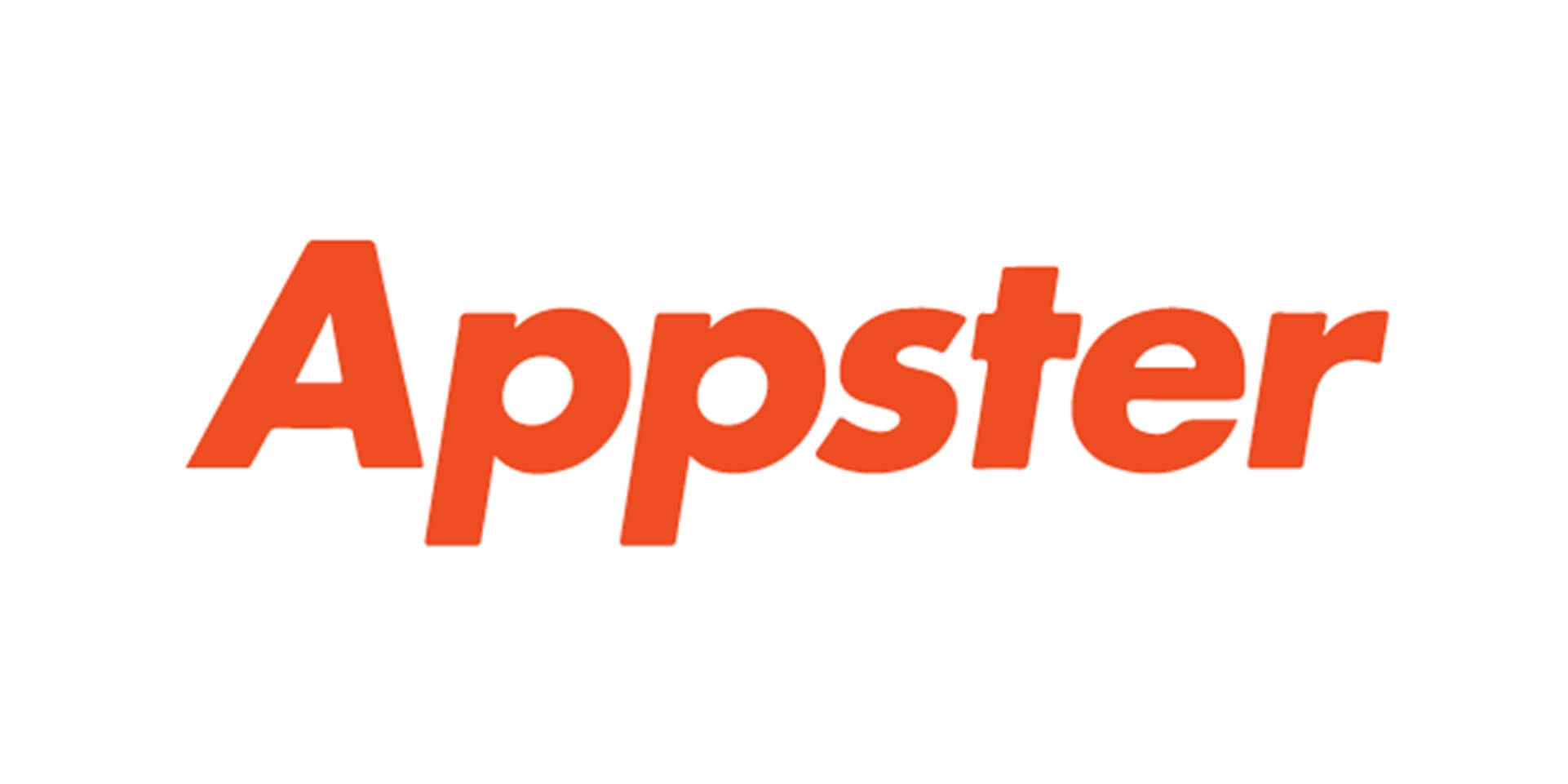
Yes, despite the fact that this company went bankrupt, there’s something to be learned from it.
The fact is, the company went broke for reasons related to finances and management. However, their marketing strategy was extremely effective, and here’s why.
While many team members lived in India, the team’s hourly rate was $50-$99, according to Clutch.

This means the company set up its lead generation policy in a smart way.
How Can Kraftblick Help Your Software Company?

- We build marketing strategies from scratch and fix existing ones. More about that here.
- We provide consultations to company owners, directors, heads of marketing and sales, marketers. This is how we do it.
See you soon 🙂
Problem 1: How to Get a Stable Flow of Qualified Leads
At first sight, Appster may seem a typical company selling its services by the usual means.

Source: inverse.com
But after enabling Sherlock Holmes mode you’ll see:
- Monthly organic traffic was around 15,000 visitors
- Most of the organic traffic came to their blog
- They used Google Ads, with a monthly budget of around $14,000
- They used Remarketing campaigns, offering free consultations to visitors who have left the website
- They were a Diamond Clutch Sponsor, spending around $9000 for at least two years

What about Appster’s ad copy?

Here it is.
What kind of banners did they use?
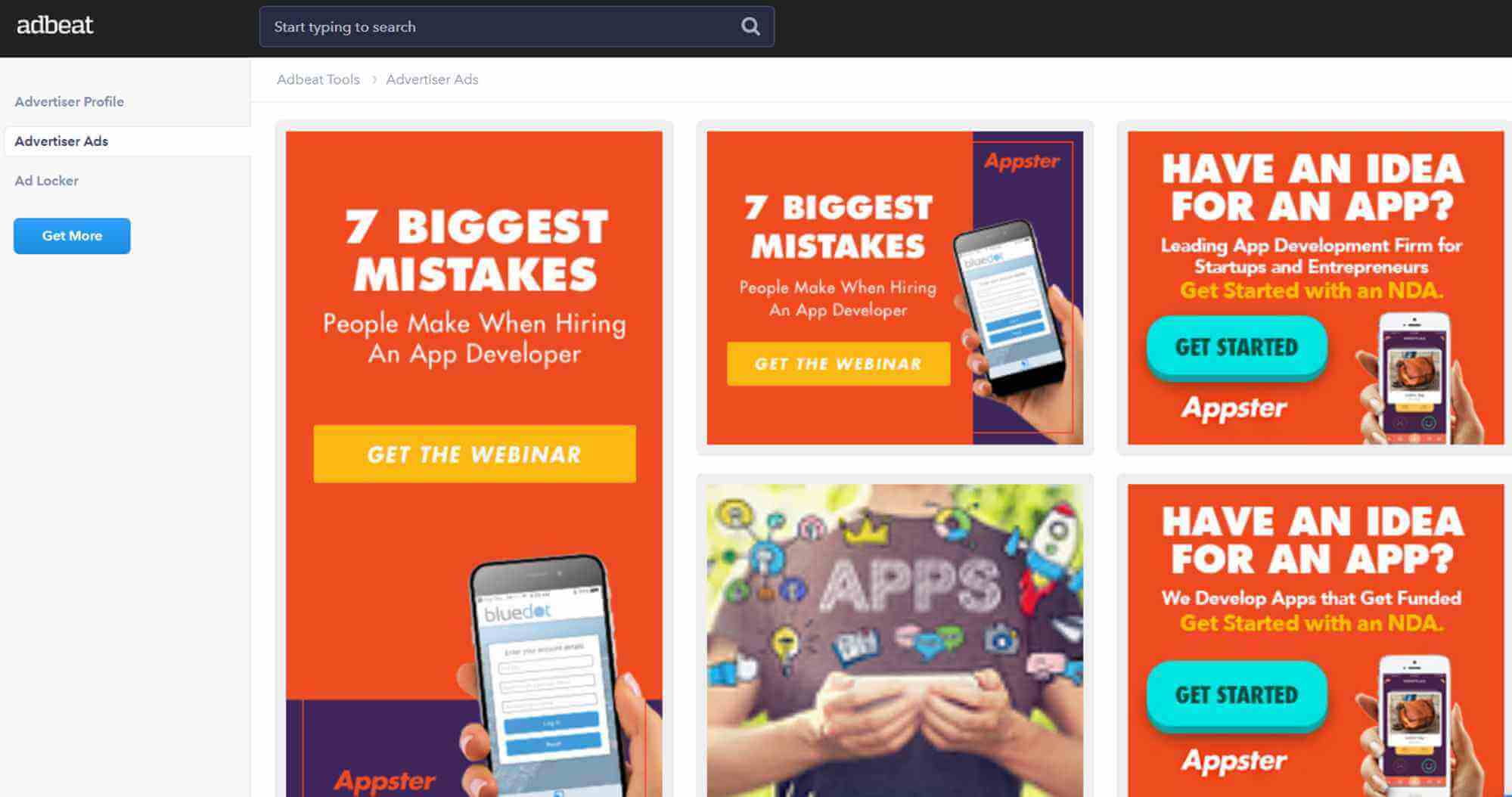
Some of the Appster’s banners.
Let’s also check out their latest ad creative:

Here are the directories in which we could find Appster:
- Clutch
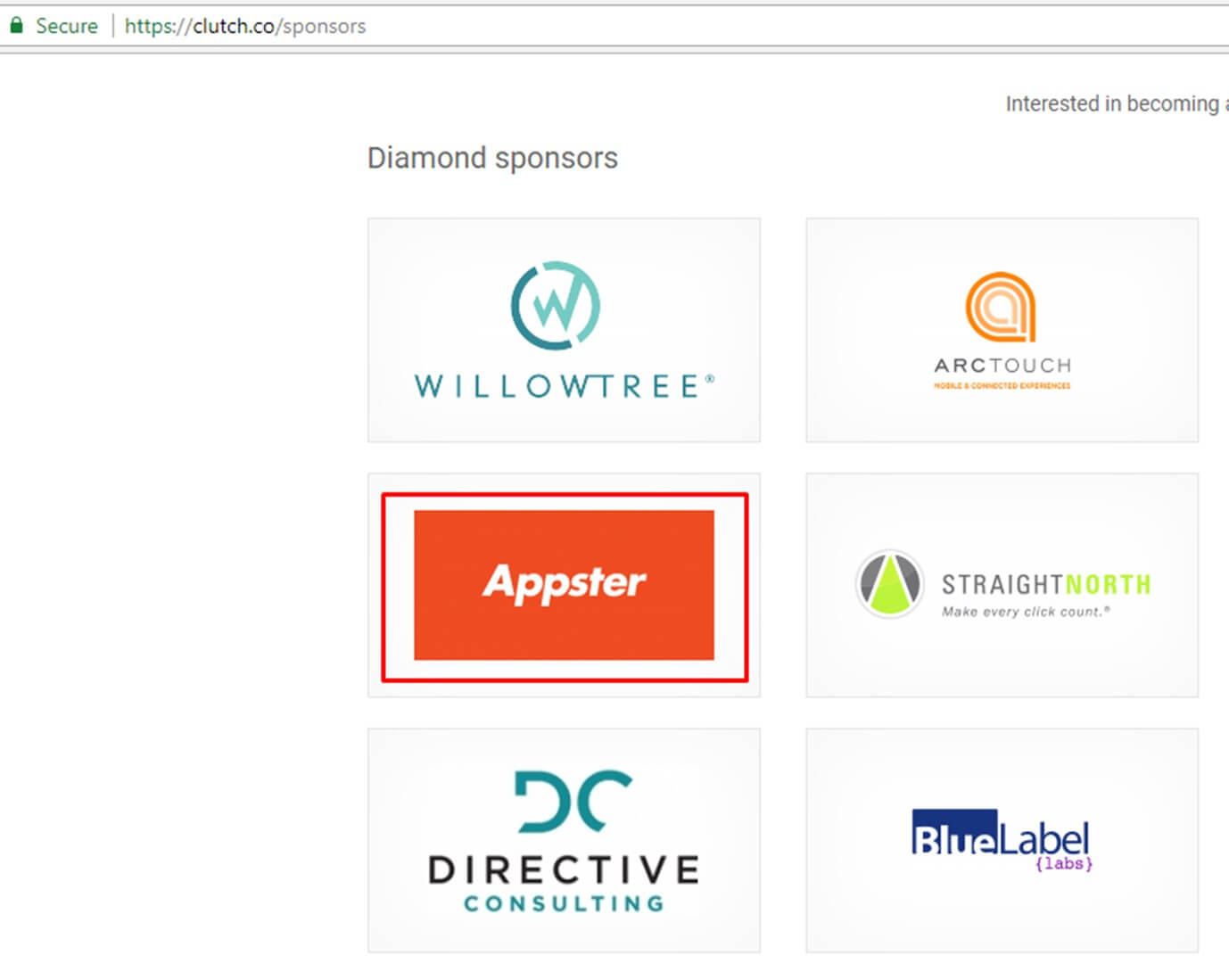
Appster was one of their diamond sponsors.
How much does being a diamond sponsor cost?


Diamond sponsors: July 4, 2017
What about other directories?
- G2Crowd
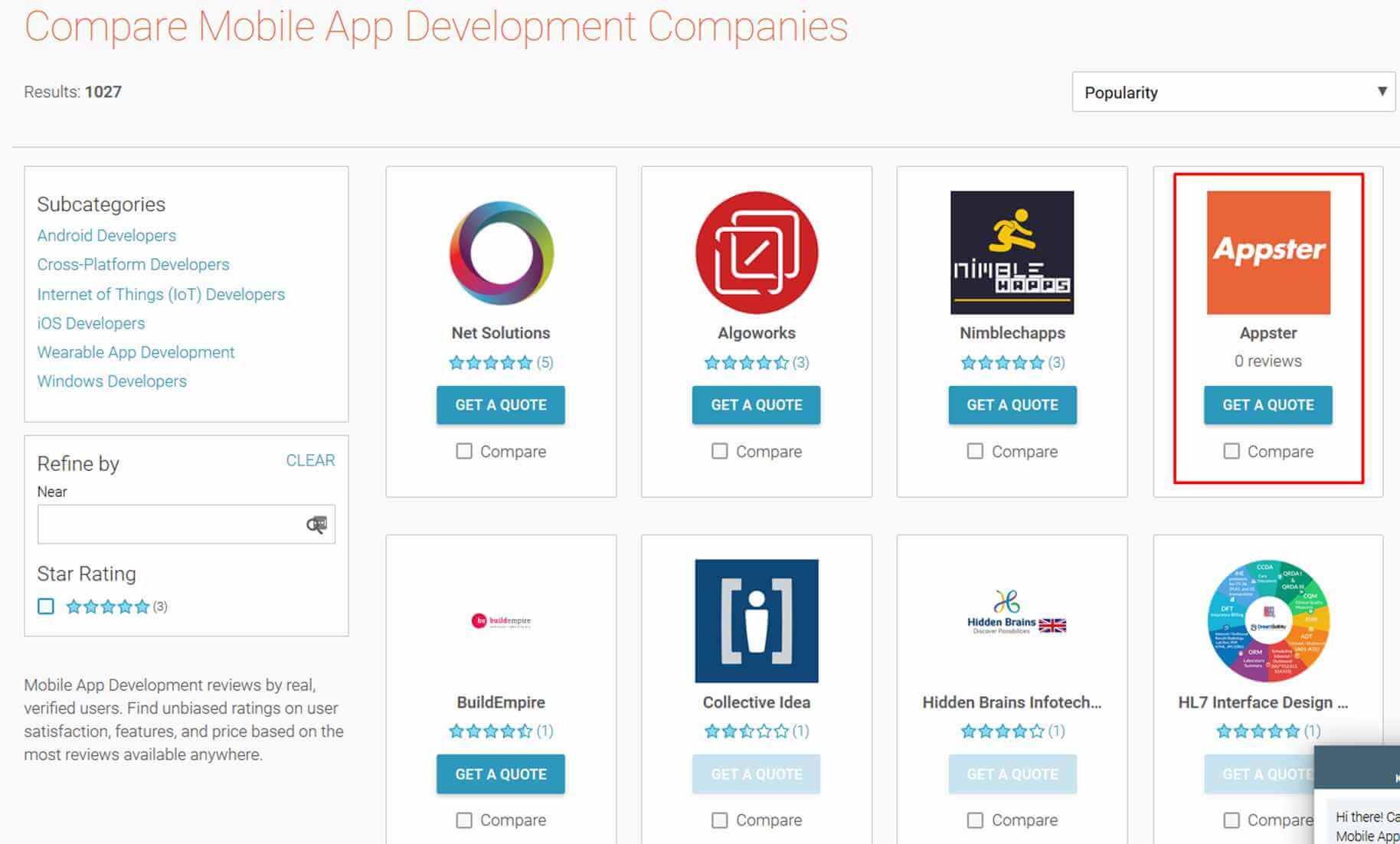
Appster used sponsorship
- GoodFirms

They didn’t use sponsorship
Organic traffic (Google etc.):

Organic traffic top pages:

As we can see, most of the organic traffic was coming from the blog.

Some interesting keywords used by Appster

And Geo-Landing Pages to target geo keywords:

Appster created these pages despite the fact there weren’t many staff members in these locations:
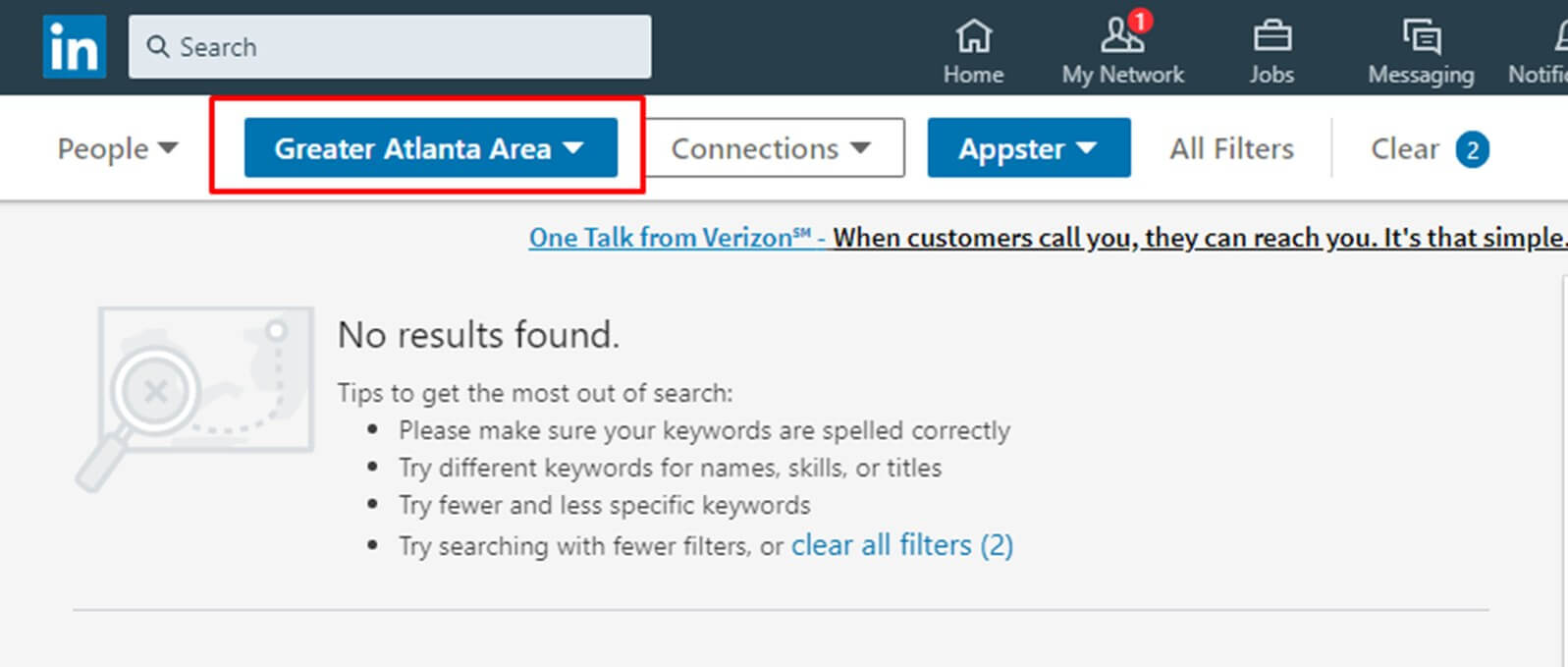
Problem 2: How to Sell to Both Startups and Enterprises
Let’s check how the Appster team cracked this problem.
First, they created separate website sections.

This one was for startups.
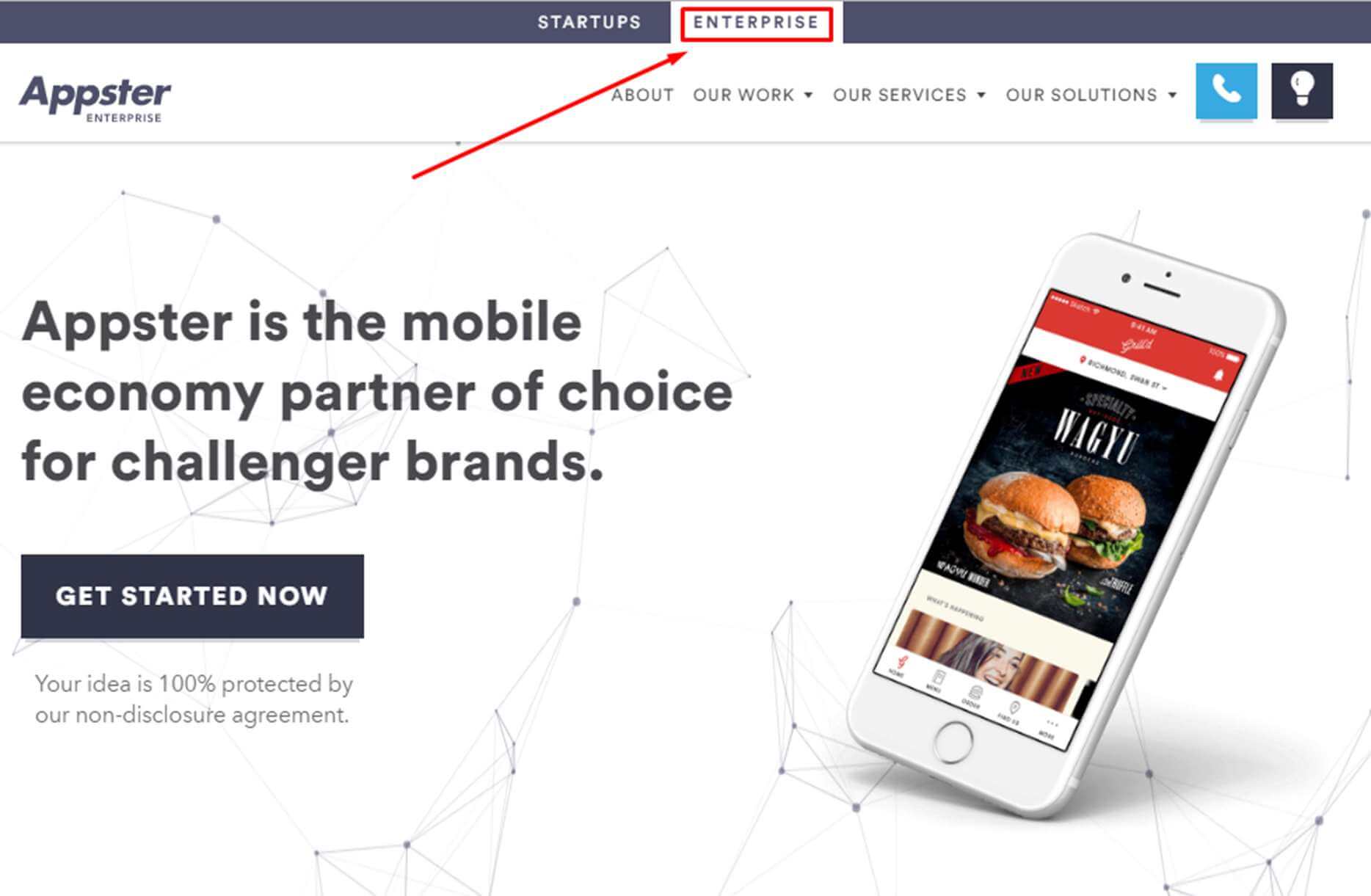
This one was for enterprises.
You may notice that each section had a different color scheme.
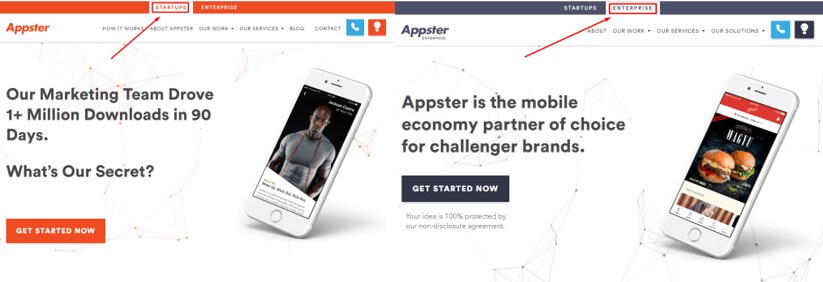
Besides color, there were deeper differences in the sections of the site devoted to different audiences.
First, the pages led with different headings. I think you can guess which page contained which:


Second, the pages contained different Calls to Action:

Third, the pages contained a different list of services:

This text is from the page for startups.

This text is from the page for enterprises.
What can you learn from this about your own online marketing? Simply this:
- Create a separate “enterprise app development” landing page
- Create a separate “app development for startups” page
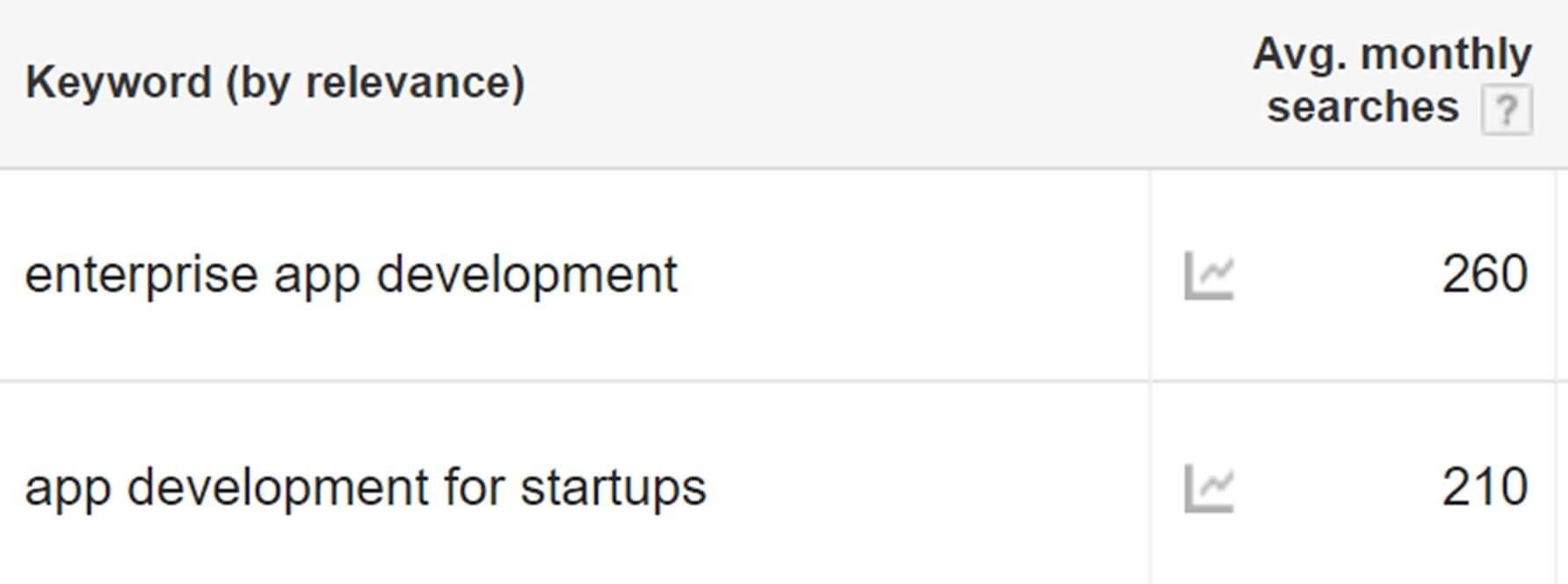
Some statistics on relevant keywords in Google.
Problem 3: How to Deal with Top-of-the-Funnel Leads
Let’s look at Appster’s services section more carefully:

Oh, wait. It looks they’ve covered the whole funnel!

For example, here is the usual process of dealing with top-of-the-funnel leads:

The process may be even simpler: “Go find XXX dollars and then let’s talk.”
So, here is how Appster delt with it:

How much do they charge?

Now, let’s add a new task to your list of to-do’s:
Design the concept for a new-product “Idea Validation Strategy Session” (= the charge for creating a requirements specification) and try to sell it to top-of-the-funnel leads.
Wrapup
In our experience, many development companies have three major challenges in terms of marketing and sales.
We’ve explained above how you can sell to both startups and enterprises, how you can deal with top-of-the-funnel leads, and some ideas for getting a stable flow of qualified leads.
The key to solving these issues is competitor analysis, and that’s why we showed you how to meet challenges using the Appster example, despite the fact that such a company no longer exists:
How to Sell to Both Startups and Enterprises
Solution: Create separate landing pages for “enterprise app development” and “app development for startups.”
How to Deal with Top-of-the-Funnel Leads
Solution: Create the concept of a new-product “Idea Validation Strategy Session” (= charge for creating a requirements specification) and sell it to top-of-the-funnel leads.
How to Get a Stable Flow of Qualified Leads
Solution: There are several methods for this. In the article, we gave Appster’s data about blogging strategy, keywords, banners, etc. A marketing strategy based on these ideas is likely to be successful.
*** Organized by Roman Davydov.